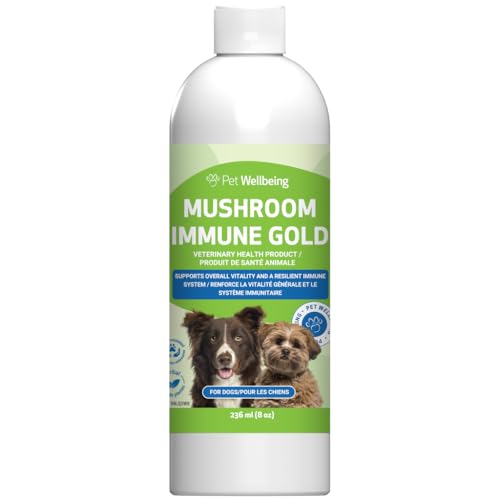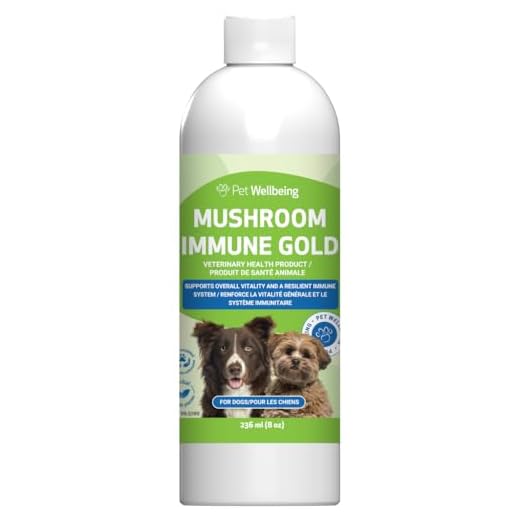


A prognosis for a canine diagnosed at an advanced level typically ranges from several months to just over a year, depending on multiple factors. Most pets receiving appropriate treatment may enjoy a significantly improved quality of life, and some even respond well enough to extend their time beyond initial expectations.
Veterinary oncology often employs chemotherapy as the primary treatment method. This approach can lead to remission in many cases, allowing for a more optimistic outlook. Regular follow-ups and monitoring are necessary to adjust treatment plans based on the individual response of the animal.
Nutrition and supportive care play pivotal roles. A balanced diet tailored to the pet’s specific needs can bolster their overall health and resilience during treatment. Incorporating supplements may also provide additional support, although consulting a veterinarian for tailored recommendations is advisable.
Engaging in gentle activities can help maintain physical and emotional well-being. While rest is essential, moderate exercise can improve mood and stimulate appetite. Staying observant of any changes in behaviour or physical condition is crucial for timely intervention.
Building a support system, including veterinarians, pet care specialists, and fellow pet owners, can provide invaluable resources and emotional support during this challenging time. Sharing experiences and learning from others can make a significant difference in navigating the complexities of this illness.
Life Expectancy for Canines Diagnosed with Advanced Lymphoma
For canines diagnosed at this advanced level, the median survival time typically ranges between 6 to 12 months following diagnosis. This can vary based on treatment options and individual factors.
Key factors influencing prognosis include:
- Type of Treatment: Chemotherapy can extend survival significantly, with some pups responding well to specific drug protocols.
- Overall Health: A canine’s general health prior to diagnosis plays a crucial role. Pre-existing conditions can complicate treatment.
- Age: Younger canines often fare better during treatment than older ones.
- Response to Treatment: Some may show a remarkable response, while others might not react as positively.
Monitoring during treatment is essential. Regular veterinary check-ups help assess the effectiveness of the chosen protocol and adjust as needed.
Many owners find palliative care beneficial in enhancing quality of life, focusing on comfort rather than aggressive treatments. This approach can involve:
- Medications to manage pain and discomfort.
- Dietary changes to ensure better nutrition.
- Providing a stress-free environment filled with love and attention.
Engaging with support groups or forums can also provide valuable insights and shared experiences that may ease the emotional burden during this time.
Each situation is unique, making open communication with a veterinarian crucial for understanding specific circumstances and options available.
Understanding Stage 3 Lymphoma in Dogs
A diagnosis at this level indicates that the malignancy has advanced significantly, affecting multiple lymph nodes and potentially spreading to organs. This stage is characterised by noticeable symptoms, including swollen lymph nodes, weight loss, loss of appetite, and lethargy. Owners should be alert to these signs and consult a veterinarian for further evaluation and treatment options.
Key Symptoms
Recognising the symptoms early can lead to timely intervention. Common signs include:
- Swollen lymph nodes in various parts of the body.
- Decreased energy levels and increased fatigue.
- Unexplained weight loss and reduced interest in food.
- Vomiting or diarrhoea in some cases.
Treatment Options
Effective strategies for managing this condition often involve chemotherapy or corticosteroids. The choice of treatment depends on the dog’s overall health, age, and specific circumstances of the illness. Regular follow-ups are essential to monitor the response to treatment and make necessary adjustments.
| Treatment Type | Description | Potential Side Effects |
|---|---|---|
| Chemotherapy | Aimed at targeting cancer cells, typically involves multiple sessions. | Nausea, lack of appetite, and temporary immune suppression. |
| Corticosteroids | Used to reduce inflammation and manage symptoms. | Increased thirst, urination, and potential weight gain. |
Maintaining a supportive environment, including a balanced diet and gentle exercise, can significantly enhance the quality of life during treatment. Regular veterinary check-ups play a crucial role in managing health and wellbeing. Engaging in open communication with your vet is key to addressing concerns and making informed decisions.
Common Symptoms of Stage 3 Lymphoma
Swollen lymph nodes are one of the most noticeable signs. If you observe visible lumps under your dog’s skin, especially around the neck, armpits, or groin, it’s a strong indicator of this condition. Additionally, lethargy is common; your pet may show less enthusiasm for activities they once loved. Pay attention to any sudden changes in energy levels.
Weight loss often accompanies this stage. If your furry friend has lost appetite, this could lead to significant weight decline over time. Vomiting and diarrhoea can also occur, causing further discomfort. If your companion seems to be struggling with digestion, it’s essential to consult a vet for appropriate dietary adjustments. For instance, opting for the best dog food for dogs without teeth can make meals easier and more enjoyable for them.
Additional Symptoms
Increased thirst and urination might be noticeable. Your pet may drink more water than usual, indicating changes in their health. Respiratory issues like coughing or difficulty breathing can arise as well, particularly if lymph nodes in the chest area are affected. Keep an eye on any persistent symptoms and seek veterinary advice for a tailored treatment plan.
Monitoring your companion closely for these signs can help in early detection and management of the condition. Regular vet visits are crucial to ensure your furry friend receives the best possible care throughout this challenging time.
Prognosis and Life Expectancy for Dogs in Stage 3
The prognosis for pets diagnosed at this level typically ranges from a few months to a year, depending on various factors. Treatment options such as chemotherapy can extend survival time, with many achieving remission. However, the response to therapy varies significantly among individual animals.
In my experience, working closely with a veterinarian to create a tailored treatment plan is crucial. Regular monitoring and adjustments based on the pet’s condition can make a significant difference. Some may respond well and enjoy a good quality of life for much of their remaining time, while others may deteriorate rapidly.
Factors Influencing Prognosis
Several elements play a role in determining how much time remains. Age, overall health, and the specific type of cancer cells involved are key considerations. Younger pets or those without other health issues often have a better response to treatment.
For instance, I remember a friend’s golden retriever diagnosed at this level. With ongoing treatment, he thrived for almost a year, enjoying his favourite activities. Regular check-ups were essential to adjust his care as needed.
Quality of Life Considerations
Maintaining a good quality of life is paramount. Pain management, nutritional support, and emotional well-being should be addressed. Palliative care options can enhance comfort during this challenging time. Regular communication with the veterinary team is vital to ensure the best possible care is provided.
Every situation is unique. By staying informed and proactive, pet owners can make decisions that align with their furry companions’ needs and comfort.
Treatment Options Available for Stage 3 Lymphoma
Chemotherapy stands out as the primary approach for managing advanced lymphatic cancer in canines. The most commonly used protocols include CHOP (Cyclophosphamide, Doxorubicin, Vincristine, and Prednisone). This combination aims to target and eliminate neoplastic cells, often leading to remission. Treatment typically spans several weeks, with sessions scheduled every few weeks, depending on the individual response.
Alternative Therapies
Integrative methods, such as acupuncture and herbal medicine, can complement conventional therapies. These alternatives might help alleviate some side effects associated with chemotherapy, like nausea or fatigue. Always consult a veterinary oncologist before introducing any adjunctive treatments to ensure they align with the primary care plan.
Supportive Care
Nutritional support plays a significant role in enhancing the quality of life during treatment. A balanced diet rich in proteins and essential nutrients can bolster the immune system. Supplements such as omega-3 fatty acids may also provide anti-inflammatory benefits. Regular check-ups are necessary to monitor the condition and adjust treatments based on the pet’s health status.
Factors Influencing Survival Rates in Affected Dogs
Age is a significant factor; younger canines often respond better to treatment compared to older ones. Their overall health prior to diagnosis also plays a critical role. A robust immune system can aid in fighting the disease more effectively, enhancing the chances for an extended life.
Breed Considerations
Certain breeds display varying susceptibility and resilience to this ailment. For instance, Boxers and Golden Retrievers tend to have poorer prognoses, while breeds like Beagles may fare better. Genetic predispositions can significantly impact outcomes.
Treatment Protocols
The type and intensity of therapy administered greatly affect survival. Chemotherapy protocols, including the CHOP regimen, show promising results, while the decision between aggressive treatment versus palliative care can also sway longevity. Regular follow-ups and adjustments to treatment are essential for maximising health post-diagnosis. Combining therapies, such as chemotherapy and radiation, can provide a synergistic effect, improving overall results.
Lastly, the emotional state and stress levels of the furry companion are often overlooked. A calm, loving environment can enhance their well-being, potentially influencing their overall survival. Positive interactions and a supportive atmosphere can make a tangible difference in their quality of life.
Importance of Regular Veterinary Check-ups
Prioritising routine veterinary visits is paramount for maintaining your pet’s health. Regular check-ups allow for early detection of potential health issues, including various forms of cancer. During my time as a dog owner, I realised that these appointments not only provided peace of mind but also kept my furry friend in optimal condition.
Early Detection and Intervention
Regular examinations can identify abnormalities or changes in your pet’s health before they become critical. For instance, during one of our routine visits, my vet noticed a slight swelling in my dog’s lymph nodes. This led to further tests, which ultimately uncovered an issue that could have escalated if left unchecked. The ability to catch such concerns early significantly improves treatment options and outcomes.
Tailored Health Plans
Veterinarians can develop personalised health plans based on your pet’s specific needs. Factors such as age, breed, and lifestyle all play a role in your furry companion’s health. After discussing my dog’s daily habits and diet, we adjusted his nutrition and exercise routine, which enhanced his overall well-being. These tailored plans often contribute to longer, healthier lives.
Investing in regular veterinary care not only helps in spotting health issues sooner but also fosters a strong bond between you, your pet, and your veterinarian. This relationship is invaluable when navigating any health challenges that may arise.
Supporting Your Canine Companion During Treatment and Beyond
Providing comfort and care during treatment can significantly enhance your pet’s quality of life. Here are practical ways to support your furry friend:
Nutritional Support
- Consult your vet for a balanced diet tailored to your pet’s needs, focusing on high-quality proteins and essential nutrients.
- Consider incorporating supplements like omega-3 fatty acids to boost immunity.
- Keep meals small and frequent if your pet experiences a decreased appetite.
Emotional Well-being
- Create a calm and familiar environment. Familiar scents and sounds can be soothing.
- Spend quality time together, engaging in gentle play or simply relaxing. Your presence can provide immense comfort.
- Use calming products like pheromone diffusers or anxiety wraps to reduce stress.
Regular mental stimulation is also beneficial. Interactive toys or puzzle feeders can keep your companion occupied and mentally engaged.
Physical Care
- Maintain a gentle exercise routine, short walks or play sessions can be beneficial, but always monitor their energy levels.
- Keep a close eye on grooming. Regular brushing and bathing can improve their comfort and hygiene.
- Monitor any changes in behaviour or health and report these to your veterinarian promptly.
Remember, each experience is unique. Remaining attentive and responsive to your pet’s specific needs is key. The bond you share can be a powerful source of strength for both of you during this time.







